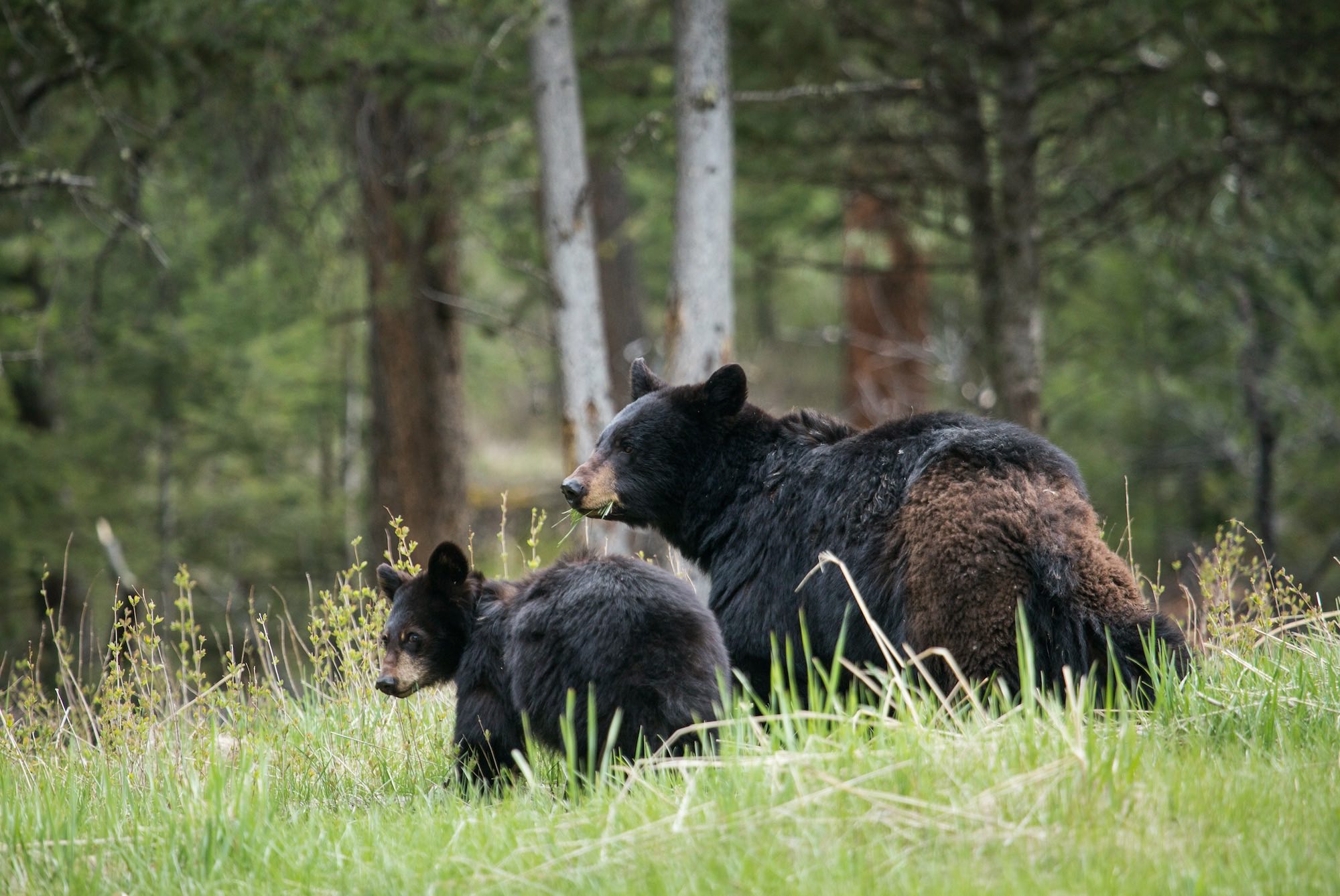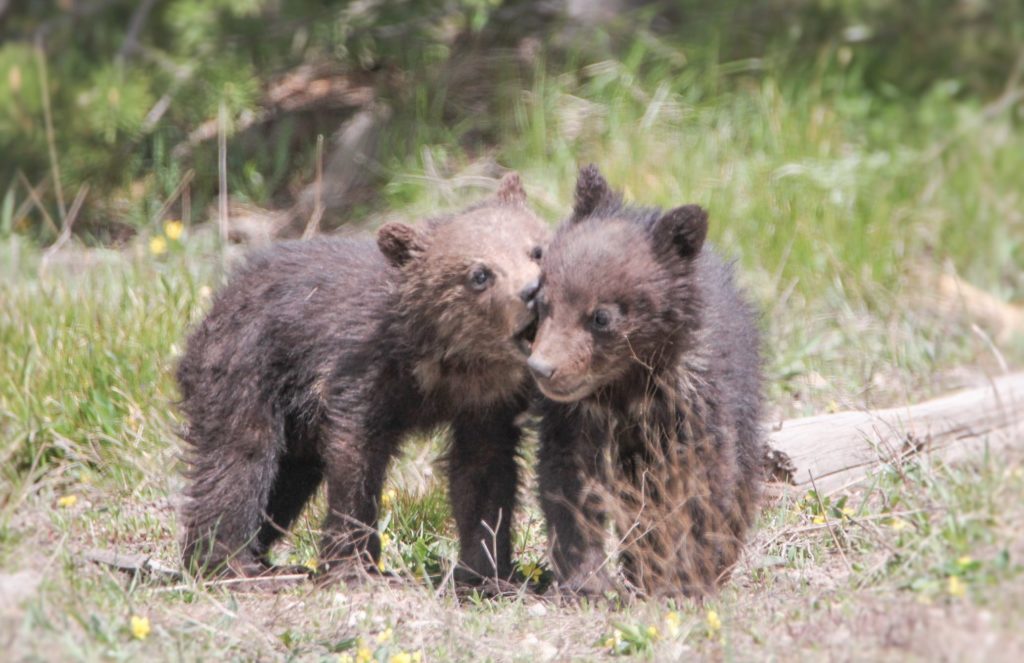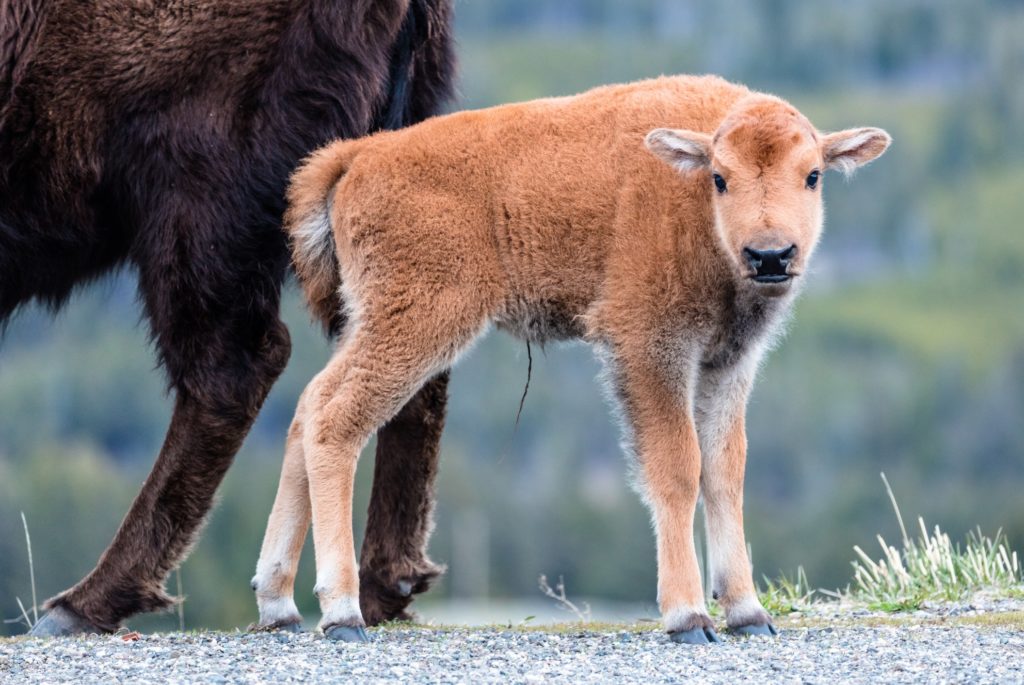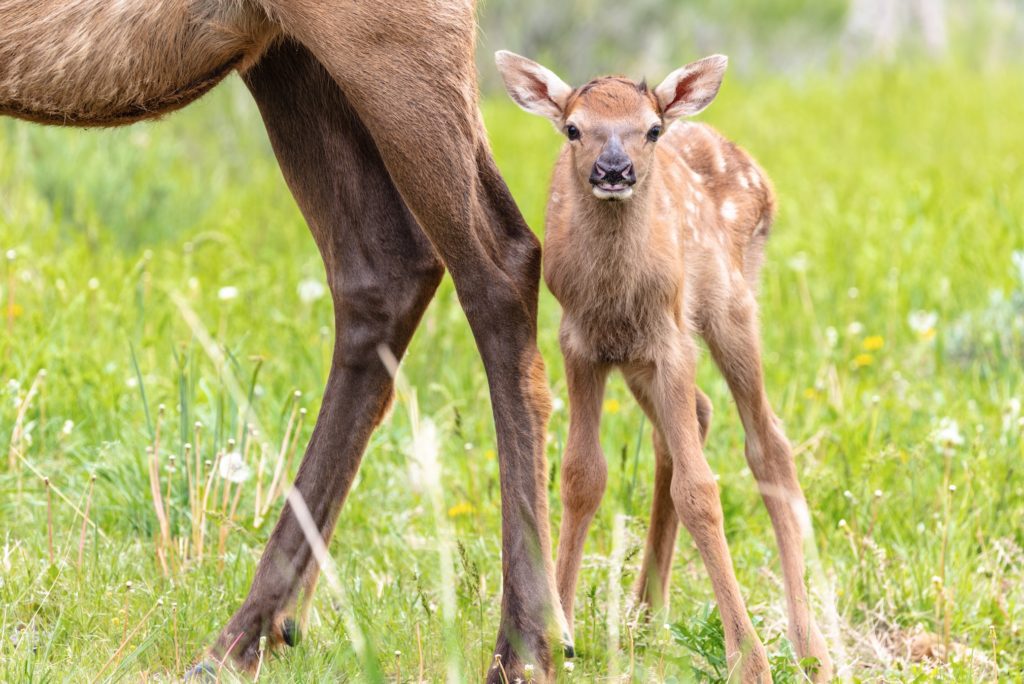Uncategorized
Spotting baby animals in Yellowstone
Published
6 years agoon
Posted By
Outlaw Partners
By Christine Gianas Weinheimer EBS CONTRIBUTOR
Who can resist the charm of clumsily cute baby animals? During the spring and summer, Yellowstone visitors who are on the lookout for wildlife may catch a glimpse of young animals and their playful antics. We’ve rounded up a few tips to increase the likelihood that you might spot baby animals during your park visit:
Black bears
A mother black bear gives birth to one to four cubs in the winter, and they will emerge together from the den in April or May. Cubs start practicing climbing trees as soon as they are strong enough, as they are not fast enough to outrun predators. Look for black bears in open spaces within or near forested areas.
Where to see: Mammoth, Tower and Northeast Entrance


Grizzly bears
Like black bears, mother grizzlies emerge from their dens in April or May with one to four cubs. Grizzly cubs generally stay with their mothers for two years, however weaning of one- to three-year-old cubs also occurs.
Where to see: Spring – Yellowstone Lake, Fishing Bridge, Hayden and Lamar valleys, Swan Lake Flats and the East Entrance. Summer – Meadows between Tower-Roosevelt and Canyon, and in the Hayden and Lamar valleys


Bison
Bison cows give birth to single calves in late April or May. The reddish-brown calves, nicknamed “red dogs,” can keep up with adult bison only two to three hours after birth, and they are well protected by their mothers and other members of the herd. Look for calves with bison herds in open, grassy areas all over the park.
Where to see: Mammoth, Lamar and Hayden valleys, West Entrance, Madison, Norris and Old Faithful


Elk
Elk cows give birth to single calves, weighing around 30 pounds, in May or June. Elk calves can walk within an hour of birth, and are often seen in a “nursery group” of cow elk and calves, separated from bull elk. Elk herds can be seen throughout the park. In the heat of mid-day they are most likely to be seeking shade under large trees.
Where to see: Gardiner, Mammoth and along the Madison River
Viewing tips
Mammal mothers are very protective and will not hesitate to charge anyone they perceive as threatening their babies. Always stay at least 100 yards away from bears and wolves, and at least 25 yards away from all other animals.
Avoid the temptation to inch closer; instead, bring binoculars or a spotting scope. For your best chance of spotting park wildlife—especially bears—plan your outing for dawn or dusk, and consider a wildlife-watching tour such as Yellowstone Day Adventures provided by Yellowstone Forever.
Christine Gianas Weinheimer lives in Bozeman and has been writing about Yellowstone for 17 years.
The Outlaw Partners is a creative marketing, media and events company based in Big Sky, Montana.


Upcoming Events
november, 2024
Event Type :
All
All
Arts
Education
Music
Other
Sports
Event Details
Spanish Classes with World Language InitiativeThese unique, no cost Spanish classes are made possible by the contribution of Yellowstone Club
more
Event Details
Spanish Classes with World Language InitiativeThese unique, no cost Spanish classes are made possible by the contribution of Yellowstone Club Community Foundation (YCCF) and Moonlight Community Foundation (MCF). This class will focus on building a lifelong affinity for world languages and cultures through dynamic and immersive Communicative Language teaching models.
Beginner Class – Mondays and Wednesdays from 5:30-6:30 pm
Intermediate Class – Mondays and Wednesdays from 6:45- 7:45 pm
- Classes begin Oct.7, 2024 and run for 6 weeks
- Class size is limited to 12 students
- Classes are held in Big Sky at the Big Sky Medical Center in the Community Room
For more information or to register follow the link below or at info@wlimt.org.
Time
October 28 (Monday) 5:30 pm - December 4 (Wednesday) 7:45 pm
Location
Big Sky Medical Center - Community Room (2nd Floor)
Big Sky Medical Center - Community Room (2nd Floor)
Event Details
Spanish Classes with World Language InitiativeThese unique, no cost Spanish classes are made possible by the contribution of Yellowstone Club
more
Event Details
Spanish Classes with World Language InitiativeThese unique, no cost Spanish classes are made possible by the contribution of Yellowstone Club Community Foundation (YCCF) and Moonlight Community Foundation (MCF). This class will focus on building a lifelong affinity for world languages and cultures through dynamic and immersive Communicative Language teaching models.
Beginner Class – Mondays and Wednesdays from 5:30-6:30 pm
Intermediate Class – Mondays and Wednesdays from 6:45- 7:45 pm
- Classes begin Oct.7, 2024 and run for 6 weeks
- Class size is limited to 12 students
- Classes are held in Big Sky at the Big Sky Medical Center in the Community Room
For more information or to register follow the link below or at info@wlimt.org.
Time
November 4 (Monday) 5:30 pm - December 11 (Wednesday) 7:45 pm
Location
Big Sky Medical Center - Community Room (2nd Floor)
Big Sky Medical Center - Community Room (2nd Floor)
Event Details
Spanish Classes with World Language InitiativeThese unique, no cost Spanish classes are made possible by the contribution of Yellowstone Club
more
Event Details
Spanish Classes with World Language InitiativeThese unique, no cost Spanish classes are made possible by the contribution of Yellowstone Club Community Foundation (YCCF) and Moonlight Community Foundation (MCF). This class will focus on building a lifelong affinity for world languages and cultures through dynamic and immersive Communicative Language teaching models.
Beginner Class – Mondays and Wednesdays from 5:30-6:30 pm
Intermediate Class – Mondays and Wednesdays from 6:45- 7:45 pm
- Classes begin Oct.7, 2024 and run for 6 weeks
- Class size is limited to 12 students
- Classes are held in Big Sky at the Big Sky Medical Center in the Community Room
For more information or to register follow the link below or at info@wlimt.org.
Time
November 11 (Monday) 5:30 pm - December 18 (Wednesday) 7:45 pm
Location
Big Sky Medical Center - Community Room (2nd Floor)
Big Sky Medical Center - Community Room (2nd Floor)
Event Details
Spanish Classes with World Language InitiativeThese unique, no cost Spanish classes are made possible by the contribution of Yellowstone Club
more
Event Details
Spanish Classes with World Language InitiativeThese unique, no cost Spanish classes are made possible by the contribution of Yellowstone Club Community Foundation (YCCF) and Moonlight Community Foundation (MCF). This class will focus on building a lifelong affinity for world languages and cultures through dynamic and immersive Communicative Language teaching models.
Beginner Class – Mondays and Wednesdays from 5:30-6:30 pm
Intermediate Class – Mondays and Wednesdays from 6:45- 7:45 pm
- Classes begin Oct.7, 2024 and run for 6 weeks
- Class size is limited to 12 students
- Classes are held in Big Sky at the Big Sky Medical Center in the Community Room
For more information or to register follow the link below or at info@wlimt.org.
Time
November 18 (Monday) 5:30 pm - December 25 (Wednesday) 7:45 pm
Location
Big Sky Medical Center - Community Room (2nd Floor)
Big Sky Medical Center - Community Room (2nd Floor)









